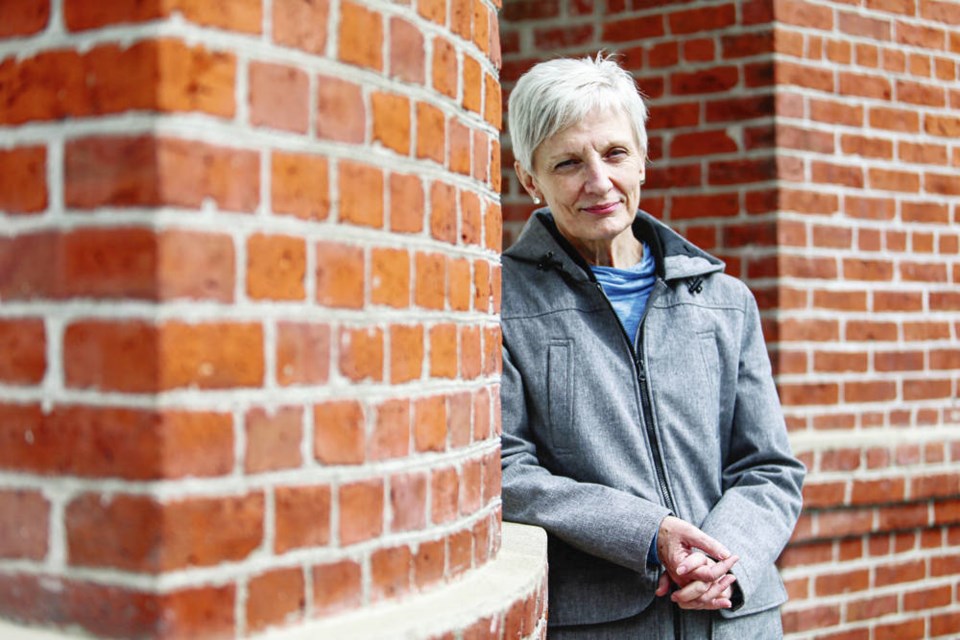A move to make coercive and controlling behaviours a Criminal Code offence to address domestic violence took a leap forward Tuesday, as a House of Commons committee recommended that a draft law be ready for consideration within a year.
Esquimalt-Saanich-Sooke MP Randall Garrison submitted his private member’s bill last year after hearing from front-line women’s organizations and police about a spike in domestic-violence calls amid the pandemic, as people have been forced to stay at home.
“It quickly became clear that new tools and strategies were urgently needed to combat a problem that has been with us long before the pandemic,” the NDP MP said.
The House of Commons standing committee on justice and human rights has tabled a report that acknowledges physical violence in intimate-partner relationships is almost always preceded by a pattern of coercive and controlling behaviour, and recommends the federal justice minister initiate a task force of experts to draft legislation to include the new offence in the Criminal Code within 12 months.
“In the 10 years I’ve been in the House of Commons, I have not seen a report that directs drafting of legislation to be brought back to the House,” Garrison, a former criminal justice instructor, said Tuesday.
Once the legislation is drafted, “I think it would proceed very quickly,” said Garrison, citing all-party support so far.
Already the bill has accomplished something in just going before the justice committee and having a report presented to the House of Commons, said Garrison. “We’ve acknowledged as a society that coercive controlling behaviour is a form of violence, and it needs to be sanctioned.”
Marlene Goley, manager of the Cridge Transition House and Outreach Services, said coercive and controlling behaviours — which often limit a person’s movement, communication and financial independence — used to be called emotional and psychological abuse, and can be “terrorizing.” But without any legislative teeth, police and front-line workers are “really kind of hamstrung,” said Goley.
A woman might report that her partner has put a tracking device on the family vehicle, slashed the tires, closed a phone account, or demanded her whereabouts in multiple texts. While individually, these actions are not against the law, those in the field recognize them as part of a pattern that often foreshadows violence.
“The violence always escalates, always gets worse,” said Goley. “Without having something like this coercive control in the Criminal Code, we’ve had to wait until it gets worse. And worse is really horrific.
“I don’t know how many tragic deaths have resulted because it got worse and there was nothing that anyone could do, or felt that they could do, up to that point. So that’s why this kind of a bill is so important.”
The legislation is not a “magic switch” she said, but could be a tool to challenge these patterns of behaviour to better protect women and their children, the majority of the victims in domestic-violence cases.
Sgt. Mike Darling of the Victoria Police Department’s Regional Domestic Violence Unit said coercive-control legislation would fill in gaps in the Criminal Code, which already includes assault, uttering threats or criminal harassment, “which really are oftentimes a singular incident.” “This is really about a pattern of behaviour that’s occurred over a longer period of time. And it’s things that are not addressed by those other offenses.”
Often, it includes social isolation, controlling household routines, tracking the person through GPS, cellphone or online storage technology, he said, adding once it’s a crime, police not only have another tool but victims are able to get support.
All intimate-partner violence involves controlling behaviours in various forms, said Darling. “We see that in every file, it’s a common thing.” Research shows the person experiencing the control is at increasing risk of physical violence, especially when trying to leave the relationship.
Britain brought in similar coercive-control legislation in 2015. The Canadian Press reported last year that by the end of 2018, an estimated 308 people had been convicted and sentenced under the law in the United Kingdom, 97 per cent of them male.
Garrison pointed to the “worst-case” example of last year’s Nova Scotia mass shooter, who moved his wife to a rural property, convinced her to leave her job, took her cellphone and removed the wheels of her car. The woman escaped after being assaulted, but the 51-year-old denturist went on to kill 22 people before police shot and killed him. “That pattern [of] coercive and controlling behaviour is easily identified and would have allowed the police to act,” he said.
Garrison said the bill was created because of what he heard from his constituents amid the pandemic, and also struck a personal chord.
“I did grow up in a family where this was routine, where coercive and controlling behaviour was a part of my family when I was growing up,” said Garrison. “But I think what really caused me to move was in doing my early call-around during COVID. It was raised independently by front-line women’s organizations and by the police, that there was a tool missing here.”
ceharnett@timescolonist.com



